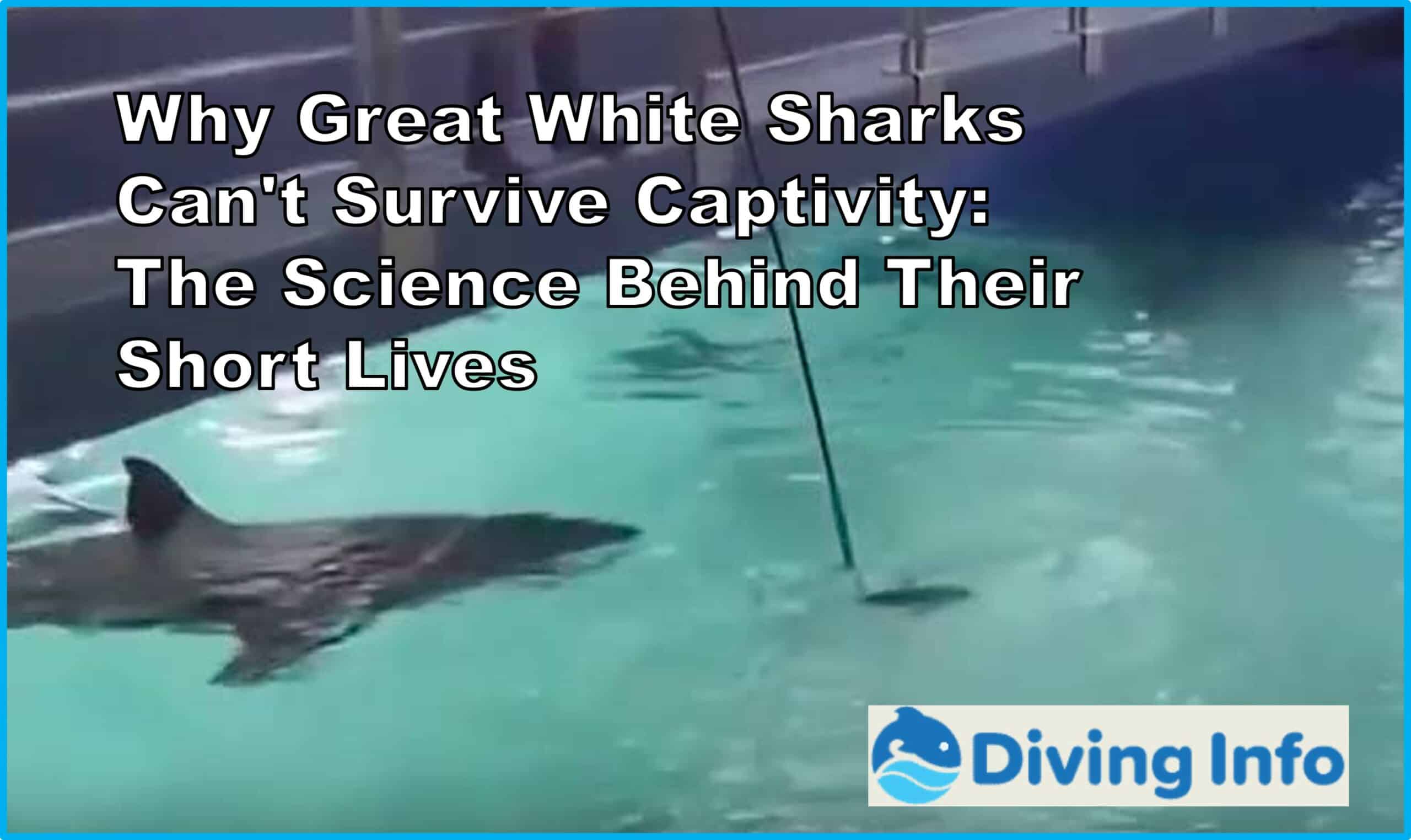*This post may contain affiliate links. As an Amazon Associate we earn from qualifying purchases.
You’ve probably heard stories of people trying to keep great white sharks in captivity, only to have them die within a few days. But have you ever wondered why this happens?
The answer lies in the unique physiology of these apex predators. Great white sharks are not like other fish that can survive in tanks with circulating water. They require a constant flow of oxygen-rich water, and if they don’t get it, they quickly build up toxic levels of lactic acid in their bodies, leading to their untimely demise.
In this article, we’ll explore the science behind why great white sharks can’t survive in captivity. We’ll delve into the physiological adaptations that make them such successful hunters in the wild, and how these adaptations make it difficult to keep them in tanks.
We’ll also look at the best places to see great white sharks in their natural habitat, and how you can safely cage dive with them to experience their beauty and power up close. So, get ready to dive deep into the world of great white sharks and discover why they continue to fascinate and terrify us.
Uncover facts about the shark lifespan.
Causes of Captivity Deaths
You already know that great white sharks struggle to survive in captivity, but the reason behind their short lives is due to the build-up of toxic levels of lactic acid. Stress is a major cause of lactic acid build-up, and adult great white sharks are particularly susceptible to this in captivity.
Without adequate oxygen levels, lactic acid cannot be dissolved, leading to fatal consequences. The high stress levels experienced by great white sharks in captivity can be attributed to various factors, including the lack of space, the absence of natural prey, and the need for human intervention to enable them to swim.
These stressors cause the sharks to produce excess lactic acid, leading to a rapid decline in health and ultimately death. It is important to understand these physiological factors to develop effective strategies for the care and conservation of these magnificent creatures.
Check out this video – What happened to the Great Whites we put in aquariums?
You may be interested in my other articles about Can you go great white shark diving in Western Australia or Why do the great white sharks congregate around Neptune Island.
Diving with Great Whites
Experience the thrill of diving with these magnificent predators in some of the world’s most incredible locations. Cage diving with great white sharks is an adventure of a lifetime that doesn’t require prior diving experience.
Explore cage-diving in shark habitats for an amazing experience.
It involves being lowered into the ocean in a steel cage while the sharks swim around you, providing an up-close encounter with these majestic creatures. Some of the best places to cage dive with white sharks include Farallon Islands, Shark Alley, and Neptune Island.
If you’re a seasoned diver, a scuba liveaboard is the best way to dive with great white sharks. This type of diving allows you to explore multiple dive sites and spend more time in the water with the sharks.
It’s important to note that while cage diving and scuba liveaboard are safe activities, they should only be done with licensed and experienced operators who follow proper safety protocols. So, if you’re up for a thrilling adventure, book your dive today and experience the beauty and power of great white sharks in their natural habitat.
Other Shark Topics
Learn about the various species of sharks and their habitats, such as the hammerhead sharks with their high mortality rate after catch and release fishing. Hammerhead sharks are known for their unique head shape that allows for better vision and maneuverability in the water. They can be found in tropical and warm temperate waters around the world, and are often targeted by commercial and recreational fishermen. Unfortunately, hammerheads have a high mortality rate after being caught and released due to the stress of the experience. Conservation efforts are being made to better protect hammerhead populations, including implementing catch limits and creating marine protected areas.
Great white sharks have been popularized in literature and media as dangerous predators, often portrayed as mindless killing machines. However, their role in the ocean ecosystem is much more complex and important. Great whites are apex predators, meaning they help regulate the populations of other marine animals. Conservation efforts for great white sharks focus on protecting their habitats and reducing human impact on their populations. This includes limiting commercial fishing and reducing plastic pollution in the ocean. By better understanding and protecting these fascinating creatures, we can ensure the health of our oceans and the diverse life within them.
| Species | Habitat | Threats | Conservation Efforts |
| Hammerhead Sharks | Tropical and warm temperate waters | Overfishing, bycatch, habitat loss | Implementing catch limits, creating marine protected areas |
| Great White Sharks | Coastal and offshore waters | Commercial fishing, plastic pollution, human impact on habitats | Limiting commercial fishing, reducing plastic pollution, protecting habitats |


